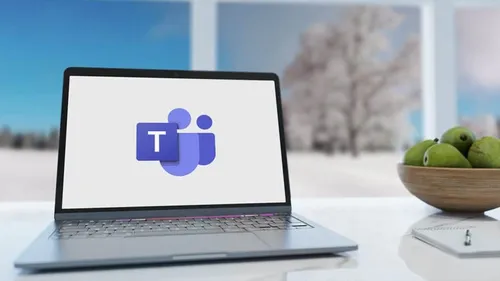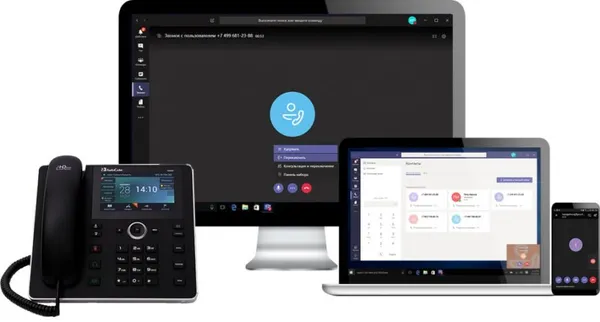
Knowledge base
October 31, 2022
How you can make the position for Teams co-organizer run smoothly
Key points in this article:
- With Microsoft Teams, Teams meeting organizers can assign participants they designate as co-organizers.
- Co-organizers enjoy most of the privileges of organizers and can help organizers ensure that the meeting runs smoothly.
- Assigning co-organizers is a simple process that can be done before the meeting begins or even while it is running.
Video conferencing is more integrated into the daily operations of businesses and organizations than ever before. They are no longer the sole province of clusters of tech-savvy workers in a department or company. They are widely used in industries, businesses, departments and offices. As a result, the planning and administration of videoconferencing can no longer reside with one employee or the IT department. Employees need to be able to easily schedule and manage meetings.
But when meetings are important, mission-critical, customer-facing or otherwise necessary, employees need to be able to work together to ensure they go off without a hitch. Microsoft Teams developers have made collaboration with meeting management easier with the introduction of the Microsoft Teams Co-Organizers feature.
Setting up co-organizers in a team meeting
Enabling this feature is quite simple and begins by scheduling a Teams meeting. In your Outlook calendar, right-click on the time and date you want to schedule and then select New Meeting Request from the resulting drop-down menu. You will be sent to a meeting invitation window, where you can select the people you want to invite from the Required or Optional fields. Start by inviting participants. Make sure the person or persons you want to serve as co-organizers have been added to the Required field.
After you have added your participants and sent your invitation, click Teams Meeting in the Meeting ribbon at the top. Then Teams options are displayed on the ribbon. Select it and you will find it in the dialog box that opens a field labeled Choose Co-Organizers. Here you enter the name(s) of the meeting participant(s) you want to assign to this role, then click Save at the bottom of the dialog box.
If you don’t have a co-organizer assigned before the meeting, don’t panic. If you realize you need someone to help, you can assign a co-organizer during the meeting. While the meeting is taking place, navigate to your Outlook calendar on a separate tab. Open the meeting and if the person you want to make co-organizer did not receive an invitation initially, invite that person now.
Once you have done so, or if they are already participating in the Teams meeting as a participant, select the More Options icon (displayed on your screen as three dots). Then select Meeting Options from the drop-down menu that appears. Here you simply add the name of your intended co-organizer or use the Participant Search feature to find their name in a drop-down menu of participants. Find the person, select this person and click Save. That person will immediately find themselves with co-organizer privileges.
What co-organizers can do
Co-organizers have most of the privileges you have as a meeting organizer. In fact, the list of what they cannot do is much shorter than what they can. Co-organizers cannot do the following:
- Take your organizer rights away from you
- Handling the meeting recording function
- Change meeting options while channel meetings are taking place
- Access to attendance reporting
But aside from these limitations, they can do everything an organizer can, including managing breakout rooms and meeting options, changing participant roles, admitting people from the lobby, locking the meeting, presenting content and ending the meeting when it’s over. With these privileges, your co-organizer can easily intervene, in case you are called out of your meeting to help manage an emerging crisis.
Two important observations. First, co-organizers do not automatically get the privilege of managing breakout rooms. They should also be assigned to the role of breakout room manager. To do this, you need to select Breakout rooms in the Meeting invitation of your Teams calendar and then click on Room Settings. You will see an option to assign presenters to manage rooms. Enable that option and then choose Search for presenters.
Here you can view a list of meeting participants and assign your co-organizer as breakout manager. As with the co-organizer role, you can assign breakout room managers after breakout rooms are enabled. However, to ensure that your meeting runs as smoothly as possible, it is highly recommended that you assign this role in advance.
Second, co-organizers cannot manage the recording function if the organizer has started recording the meeting and then has to leave the meeting. This is because the recording file is in the organizer’s OneDrive account, which the co-organizer would not have access to. However, if the organizer has not started recording the meeting by the time they leave, the co-organizer can do so.
Why adding a co-organizer is helpful
When you add a co-organizer, they have most of the powers you have to manage the meeting. If you are late or miss the meeting, your co-organizer can start, run and end the meeting without delay. And making sure you always have a co-organizer when you schedule a meeting can be helpful in case an emergency forces you to leave mid-meeting or if you experience technical difficulties managing any part of it. Co-organizers can ensure that your Teams meetings run smoothly with little to no interruption, no matter what curveballs you encounter.
Microsoft allows you to add up to 10 co-organizers per meeting. Now this may seem unnecessary if you have never had more than ten members for the Teams Meetings you have managed. But with Teams, you can hold a meeting in which up to 1,000 people can participate. In addition, the Read-Only option allows you to manage a Teams Meeting in which up to 20,000 people can listen in. With such spectator numbers, having up to 10 co-organizers makes a lot more sense.
Even if you don’t hold a meeting of that size, some Teams meetings have a lot of moving parts. Microsoft Teams has been used to schedule meetings that span geographic areas and time zones and include multiple presentations, group breakout room exercises, polls and other activities. When the logistics of meetings are particularly complex, it is a good idea to assign co-organizers and delegate to them the responsibility of handling different parts of the meeting. This can help ensure that the meeting runs smoothly and that there are people who can intervene quickly to manage the meeting if things take an unexpected turn.
Source: onpartech
Want to know more?

Related
blogs
Tech Updates: Microsoft 365, Azure, Cybersecurity & AI – Weekly in Your Mailbox.









